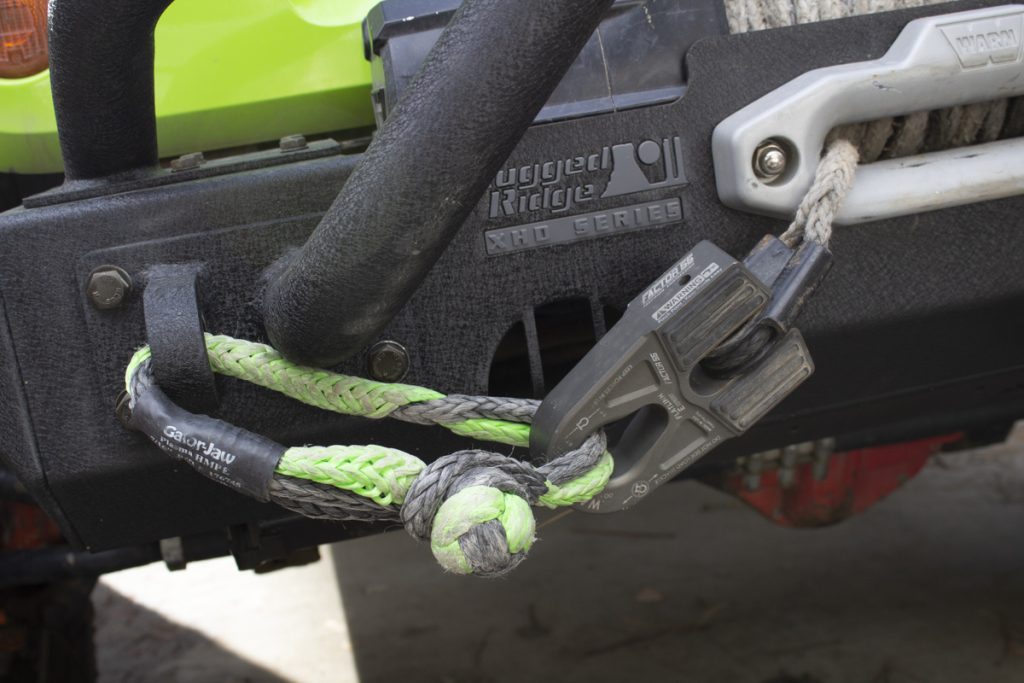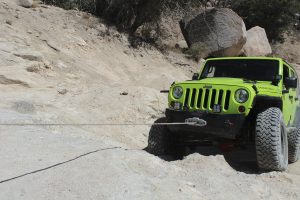Tech
WINCHING SAFETY TIPS – Winching Tips, Tricks & Techniques
Originally Published in Issue 36 of 4Low Magazine
Make sure to subscribe to get the newest issues of 4Low Magazine right to your mailbox. CLICK HERE
by Don Alexander
The winch provides the best way to get unstuck, whether it’s your rig or someone else’s. Winches generate considerable pulling power. Most 4×4 rigs use winches in the 8000 pound to 12000 pound pulling capacity range. If you have ever witnessed a winch pulling near its load capacity, you have a clear idea of the power a winch creates. With the power comes genuine risk. From the winch to the winch line and the shackles used to couple everything, every part of the winching system must provide adequate strength to handle the massive loads. Catastrophic failures happen. Significant damage can occur, and serious, even fatal injuries are possible. Winches and winching gear need to be handled with care, respect, and common sense.
WINCHING SAFETY TIPS
- Always wear gloves. When working with wire rope, the steel strands can fray and cause nasty cuts.
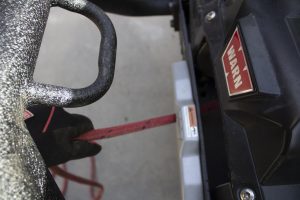
- Always conduct winching operations with the engine running on the winching vehicle. Winches draw a lot of amperage and can drain a battery very quickly.
- Before beginning the rigging for a winching operation, take a few minutes to analyze the situation. Rushing into the recovery can lead to mistakes that can make the process more difficult, time-consuming, and dangerous.
- Winches need a solid, stable base to pull from. Large trees, large rocks, or other vehicles make good anchor points. A ground anchor like the PullPal or Deadman work in soft surfaces when there is nothing else to pull against.
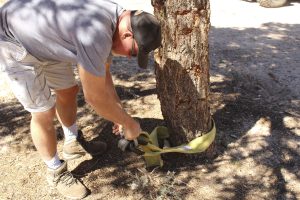
- If you use a strap around a rock, make sure it is large enough and firmly planted in the ground to handle the winching load. Dislodging large rocks is more common than you would expect.
- Pull out the winch line from the spool by hand with the clutch lock released to ensure the line isn’t doubled over when rewinding. When doubled over, the line suddenly reverses direction and gives the person pulling out the line a tug.
- After a winching operation, always re-spool the winch line to assure that the winch line has not doubled back on itself.
- As the last five feet of the winch line is rewound, hold the winch line by the hook or link, not the winch line. Holding the winch line can allow your hand to be pulled into the fairlead resulting in an injury. Tap the winch remote control quickly to spool in the last few inches so that the winch line is not under a heavy load when not in use.
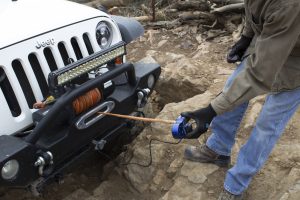
- Keep everyone away from the swing zone of the winch rope. This is the radius that the winch line could swing if the connection were to break at either end. This zone has two radii, one at each end. The best place to be is to the side of either the rig being pulled or the anchor point. Anyone within the winch line swing zone is at significant risk if the winch line or any attached component fails. Synthetic winch rope is much safer than steel winch rope, which, when under tension, can act as a slingshot.
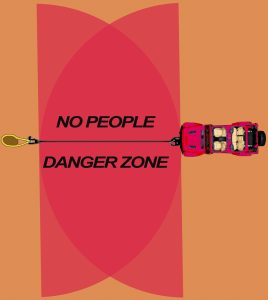
- When tightening a shackle, turn the threaded pin until it is snug, then back it off a quarter turn. This will make it easier to unscrew the pin when the operation concludes.
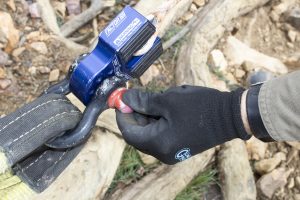
- Never use a winch end link on a non-winching vehicle as an anchor point for winching.
- After putting a little tension on the winch line, place a line dampener on the winch line. This is especially important when using steel winch rope, as it is not self-dampening like synthetic winch rope. A winch line dampener is any fabric weighing at least 4-5 pounds that can be draped over the winch line. Should the line snap, the dampener will minimize the snapping effect of the broken line and reduce the flinging of the line itself or items attached to it. A dampener could be a large towel, jacket, blanket, sleeping bag, or a special winch line dampener designed for this purpose. While synthetic winch line is much less dangerous, a dampener should still be used.

- Unless the vehicle being winched is disabled, the driver should be assisting the winch by driving slowly.
- Only one person should be in charge of the winching operation.
- Assign tasks to others as needed. Ensure someone is positioned to watch the vehicle being winched to make sure there are no binds or other potential problems. Someone else should watch the anchor point. Make sure everyone is on the same page for communication, both verbally and with hand signals. Keep it simple, like a thumbs’ up and verbal Okay for pulling and a Stop with a balled fist thrust into the air to stop winching. Make sure the observers are out of harm’s way before the winching operation begins.
- Always have at least five wraps of winch line around the drum before winching. This is the minimum to assure no slippage of the line on the drum.
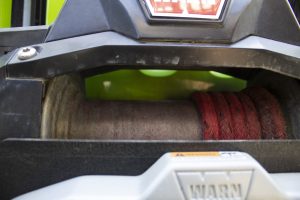
- A winch design follows the laws of physics. As layers of winch line accumulate on the winch drum, pulling power decreases. Winch power can be reduced nearly 50% from maximum when the line is five layers thick vs. the single layer. If you have a difficult pull, play out the winch line as much as possible to maximize the pulling power; if necessary, use a snatch block to play out more line. The pulley will also increase the pulling power by twice while reducing line speed to half.
- Always use a tree saver strap when pulling from a tree. Make sure the tree is strong enough for the winching load. Placing the tree saver close to the base of the tree reduces leverage on the tree, and the base is the strongest area of the tree trunk. Use a wide tree saver strap. Three-inch straps are good. Four or five-inch wide straps are better.
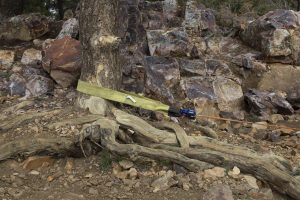
- Use high quality shackles and winch line links. The weakest link in the winching system should be the winch line, not attachment points or hardware. Inexpensive “D”-ring shackles fail often. Deaths can occur when people are struck by flying broken shackles and end links. The Factor 55 Flat End Link features a tapered opening allowing either the bow end or the pin of a shackle to be easily inserted. A soft shackle can also be used with this end link. End links with round holes are often too small to allow the shackle’s bow end to be fed into the opening.
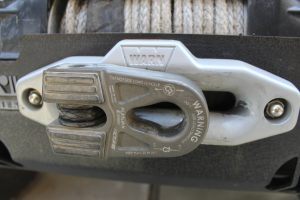
- If the estimated pulling load on the winch exceeds 65% of the winches rated pulling power, use a snatch block (pulley) to increase the winch’s pulling power. This will keep the winch from getting overloaded or overheated.
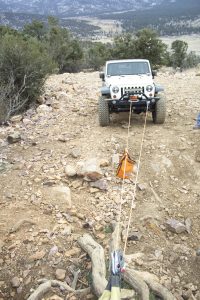
- Winches are designed to pull straight ahead so that the winch line spools onto the drum smoothly. Slight angles on the line are acceptable, but steeper winch line angles will place a side load on the vehicle, which can dramatically increase the load on the winch. The front of the vehicle can also be pulled sideways, which can damage tires or even unseat the tire bead from the rim
- When spooling in the winch line under load, the line can build up in one area of the spool. If this occurs, release tension on the winch, play out the winch line, and re-spool enough line to allow an even rewind.
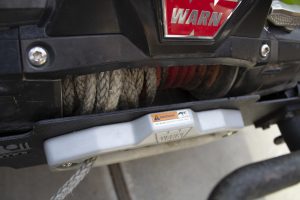
- Wireless remote controllers make winching safer and more convenient. Winch operations can be conducted away from the vehicle. The new Warn Zeon Platinum winches now have winch clutch engagement and disconnect operated by the wireless remote.
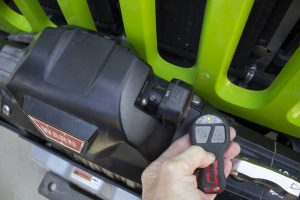
- When you are winching your own vehicle, the winch line is not moving relative to the ground. When you winch another vehicle, the winch line is moving relative to the ground. Ensure that the winch line is protected from dragging in the dirt or across rocks or anything causing abrasion. Place a blanket towel or other type of pad under the winch line any place it may drag on the ground.
- After rigging the winch line and under some load, if the winch line’s angle is rubbing on the bottom of the fairlead, it is adding load to the front tires, which increases winch load and can compress the front suspension. This can make the pull more difficult. If the line is touching the top of the fairlead, then the winch line is lifting the vehicle’s front. This places more load on the winch but reduces the load on the front tires. This slight lifting force may make getting unstuck from gooey mud or deep snow a little easier.
- Never winch from the side of a vehicle. Vehicle winch line attachment points should be tied to the frame or a strong winch bumper with attaching eyes. Winch pulls should always align with the direction the vehicle is pointing. Vehicles have been rolled over and cages yanked off frames from side pulls.
- Most 4×4 electric winches are rated for an intermittent duty cycle, so if you have a long, hard pull, give your winch and battery a break on occasion. Let the motor and battery cool for a few minutes, then resume the winching process. This is even more important on less expensive winches where pulling power and duty cycle are not as capable.
- Soft Shackles offer strong, easy, and safe use in place of metal shackles in many cases.
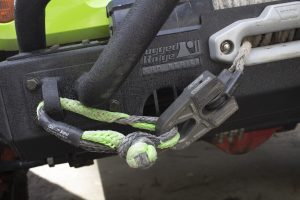
- A hawse fairlead should be used with a synthetic winch line. Steel winch lines use a roller fairlead.

- If the winch line has been in the dirt, mud, sand, or snow, it is good practice to unspool the line, clean with warm, soapy water, rinse thoroughly and re-spool the dried line. You are then fully prepared for your next winching adventure.
- Never, ever use a trailer hitch ball as an anchor point for anything. The ball can break off and become a lethal weapon.
- Never use a winch designed for off-road use as a hoist for lifting vertical loads.
- Never use a winch to lift a person.
Winches are a powerful, useful tool. When used properly, they offer a great way to get unstuck, hopefully for someone else. Misused, winches can prove to be deadly. Use your winch wisely, respect the power, and you will have a tool that will serve you well for a very long time.

